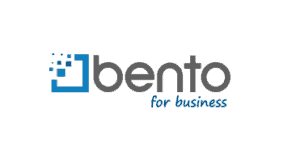Whether it takes the form of embezzlement or asset misallocation, corporate fraud is a crippling problem. One of the ACFE’s key findings in their annual report to the nations was that “Data monitoring and surprise audits were correlated with the largest reductions in fraud loss. Yet only 37% of victim organizations implemented these controls”. No matter how they manifest, scams can make it impossible to keep your company moving forward.
Are fraud tools the answer? Although no anti-fraud method is flawless, calculators and other risk-assessment software are well-known weapons in the fight against financial wrongdoing. Here’s why they aren’t just for private consumers.
What Is a fraud tool?
Fraud tools come in many forms. Some common options you might encounter include:
- Calculators that help you assess the unique hazards posed by your business model
- Monitoring tools that keep tabs on your spending to identify potentially suspicious trends
- Control tools that limit where and how much and employee can spend
- Auditing regimens that periodically ensure everybody’s been playing honestly
What makes fraud tools so Important?
Fraud tools are critical to doing good business. When your company becomes a victim of illicit activity, it can jeopardize your future chances of success. The ACFE’s annual report to the nations found that “Tips are by far the most common initial detection method.”.
Most people focus solely on the monetary losses that they incur as a direct result of fraudulent activity, but budget drain isn’t the only danger. If you don’t use a fraudulent charges tool to nip scams in the bud, you could suffer for it later.
Completing your organizational mission is much harder when you can’t get a business loan due to fraud that lowered your credit score
If fraud goes unnoticed, it might encourage others to steal from you and increase your losses
In 2018, fraud industry research showed that fraudsters who had been with their companies for more than five years stole twice as much as scammers with less tenure, so quick action is essential
Most victims of business fraud don’t recover anything after the fact. Business fraud tools keep you one step ahead, so they’re integral to cutting your losses.
How common is fraud?
According the ACFE, In 2017, there were 2,690 reported instances of occupational fraud in 125 nations. Identity-based crimes are also becoming increasingly common as professionals rely on more data and devices for basic tasks.
Circumstances like your chosen field, business size, location and customer base all impact your fraud risk. Some of these things are hard to control, but you can take charge of how you manage fraud. For instance, if you’re not careful about your use of payment tools, then you could be at an even greater risk of credit card scams.
Who normally faces the greatest fraud risks?
One 2016 survey of fraud professionals in Fraud Week, found that the top three dangers included:
- Insufficient interdepartmental communication
- Inadequate checks and balances
- Organizational inability to identify or address known danger factors
Although these facts may seem to paint a grim picture, the reality is that preventing fraud is doable. With tools that accommodate your business model by seamlessly integrating into how you work, it doesn’t have to be difficult.
How can businesses prevent fraud?
Controlling fraud revolves around controlling the risk factors that encourage it. Bento for Business uses DigiCert-approved SSL encryption and instant digital spending reports to limit vulnerabilities and boost your reaction time. Since these cards are also prepaid, you can lower the risk you face when you decide to give your employees more latitude.
Bento for Business includes a fraudulent charges tool that helps you see problems before they harm your enterprise. Find out why 5,000 business clients love it with your free 60 day trial or call us at 866.220.8455.






